
Panevėžys: The Heartbeat of Aukštaitija
Discover Panevėžys: A Charming Blend of History, Culture, and Nature in the Heart of Lithuania
Panevėžys, located in the heart of Lithuania, is a city that beautifully combines history, culture, and nature. As the fifth largest city in the country, it offers a unique blend of old-world charm and modern amenities. Founded in 1503, Panevėžys has grown from a small settlement to a vibrant city that is rich in cultural heritage and local traditions. One of the city's main attractions is the unique Senvagė Park, a serene green space that winds through the city center. Here, you can take a leisurely stroll along the river, enjoy the well-maintained gardens, or simply relax on one of the many benches. The park is also home to a variety of events throughout the year, including concerts, festivals, and local markets, making it a lively spot for both locals and visitors. For those interested in history and architecture, Panevėžys offers several fascinating sites. The St. Peter and Paul's Church, with its stunning Baroque architecture, is a must-visit. The city also boasts a number of museums, such as the Panevėžys Civic Art Gallery and the Ethnographic Museum, which provide insights into the region's rich past and vibrant cultural scene. In addition, the city's old town, with its charming streets and historic buildings, is perfect for a leisurely exploration. Panevėžys is also known for its thriving theater scene. The Juozas Miltinis Drama Theatre, named after the renowned Lithuanian director, offers a variety of performances that attract theater enthusiasts from all over the country. Additionally, the city hosts the annual Panevėžys International Film Festival, which showcases an array of international films and draws cinephiles from near and far. Food lovers will find plenty to enjoy in Panevėžys. The city has a diverse culinary scene, ranging from traditional Lithuanian dishes to international cuisine. Local markets and cozy cafes dot the city, offering fresh produce, homemade pastries, and delicious coffee. Don't miss the chance to try some local specialties, such as cepelinai (potato dumplings) and šakotis (a traditional Lithuanian cake). With its rich history, vibrant culture, and friendly locals, Panevėžys offers a unique and memorable experience for any traveler. Whether you're interested in exploring its historic sites, enjoying its natural beauty, or simply soaking up the local atmosphere, this charming city has something for everyone.
Local tips in Panevėžys
- Visit Senvagė Park early in the morning for a peaceful experience and to avoid crowds.
- Check the schedule at Juozas Miltinis Drama Theatre for any upcoming performances during your visit.
- Explore the local markets for fresh produce and unique handmade souvenirs.
- Try traditional Lithuanian dishes at local eateries to get a taste of the region's culinary heritage.
- Consider visiting during the Panevėžys International Film Festival for a unique cultural experience.
Panevėžys: The Heartbeat of Aukštaitija
Panevėžys, located in the heart of Lithuania, is a city that beautifully combines history, culture, and nature. As the fifth largest city in the country, it offers a unique blend of old-world charm and modern amenities. Founded in 1503, Panevėžys has grown from a small settlement to a vibrant city that is rich in cultural heritage and local traditions. One of the city's main attractions is the unique Senvagė Park, a serene green space that winds through the city center. Here, you can take a leisurely stroll along the river, enjoy the well-maintained gardens, or simply relax on one of the many benches. The park is also home to a variety of events throughout the year, including concerts, festivals, and local markets, making it a lively spot for both locals and visitors. For those interested in history and architecture, Panevėžys offers several fascinating sites. The St. Peter and Paul's Church, with its stunning Baroque architecture, is a must-visit. The city also boasts a number of museums, such as the Panevėžys Civic Art Gallery and the Ethnographic Museum, which provide insights into the region's rich past and vibrant cultural scene. In addition, the city's old town, with its charming streets and historic buildings, is perfect for a leisurely exploration. Panevėžys is also known for its thriving theater scene. The Juozas Miltinis Drama Theatre, named after the renowned Lithuanian director, offers a variety of performances that attract theater enthusiasts from all over the country. Additionally, the city hosts the annual Panevėžys International Film Festival, which showcases an array of international films and draws cinephiles from near and far. Food lovers will find plenty to enjoy in Panevėžys. The city has a diverse culinary scene, ranging from traditional Lithuanian dishes to international cuisine. Local markets and cozy cafes dot the city, offering fresh produce, homemade pastries, and delicious coffee. Don't miss the chance to try some local specialties, such as cepelinai (potato dumplings) and šakotis (a traditional Lithuanian cake). With its rich history, vibrant culture, and friendly locals, Panevėžys offers a unique and memorable experience for any traveler. Whether you're interested in exploring its historic sites, enjoying its natural beauty, or simply soaking up the local atmosphere, this charming city has something for everyone.
When is the best time to go to Panevėžys?
Iconic landmarks you can’t miss
Culture and Leisure Park
Experience the perfect blend of nature and culture at Culture and Leisure Park, an enchanting escape in Panevėžys, Lithuania.
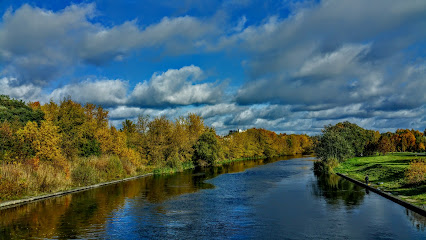
Senvagė
Explore Senvagė Park in Panevėžys, a peaceful oasis filled with nature, beauty, and community spirit perfect for relaxation and adventure.
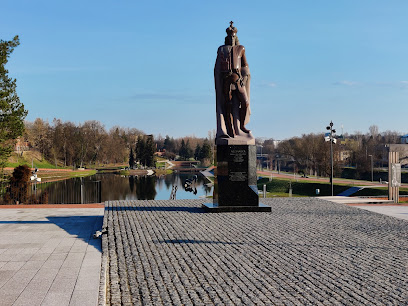
Skaistakalnis Park
Immerse yourself in the natural beauty and tranquility of Skaistakalnis Park, an urban oasis in Panevėžys for relaxation and recreation.
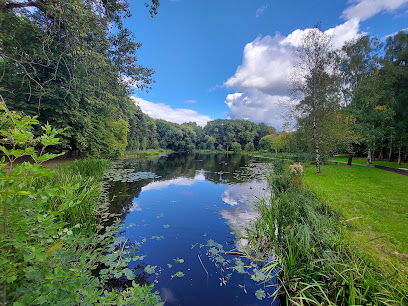
Culture Palace community center of Panevezys
Explore the vibrant Culture Palace in Panevėžys, a hub for art, music, and community events showcasing Lithuania's rich cultural heritage.
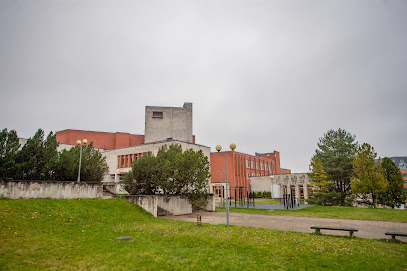
Lithuanian Martyrs Church, Berčiūnų
Explore the Lithuanian Martyrs Church in Panevėžys, a serene Catholic sanctuary rich in history and architectural beauty.
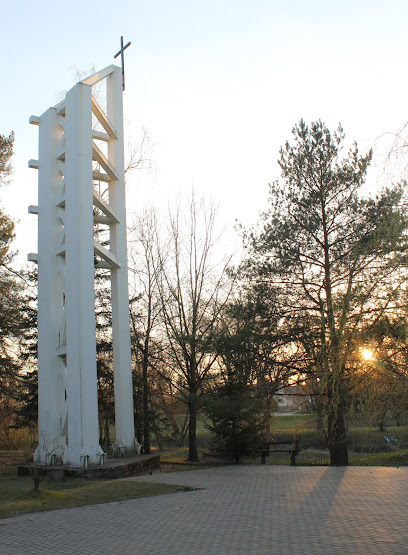
Panevezys Civic Art Gallery
Discover the rich tapestry of Lithuanian art at the Panevėžys Civic Art Gallery, where creativity meets community in a vibrant cultural experience.
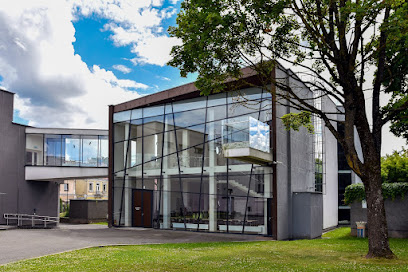
Panevėžio kraštotyros muziejus
Explore the depths of local culture and history at Panevėžio Kraštotyros Muziejus, a hidden gem in Panevėžys, Lithuania, perfect for history enthusiasts.
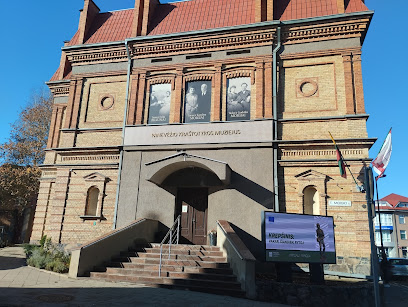
secret Bunker
Experience the excitement of laser tag at the Secret Bunker in Panevėžys, where thrilling games and immersive environments await all adventurers.
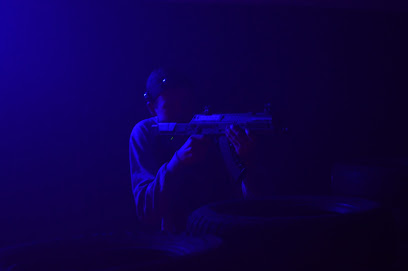
VšĮ Panevėžio plėtros agentūra (Panevėžys NOW)
Explore Panevėžys: Your essential start for discovering the culture, history, and unique experiences of this charming Lithuanian city.
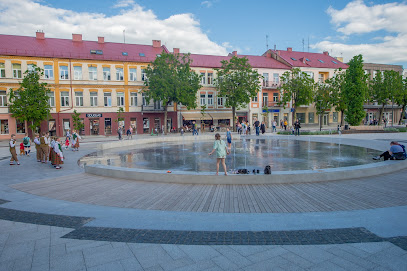
Skaistakalnis
Discover the tranquil beauty of Skaistakalnis Park in Panevėžys, a perfect escape for nature lovers and families seeking relaxation and recreation.
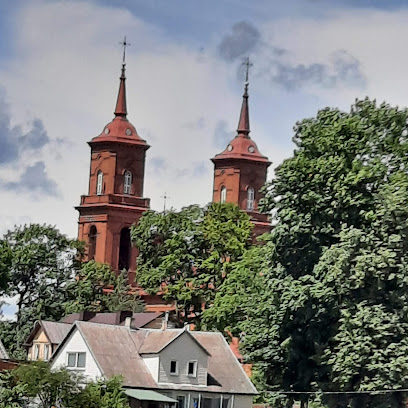
Panevezio vyskupijos kurija
Explore the architectural beauty and spiritual significance of Panevezio Vyskupijos Kurija, a key landmark in Panevėžys' rich cultural tapestry.
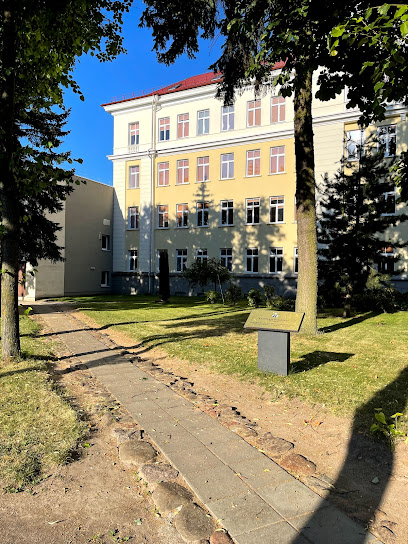
Panevėžys Windmill
Experience the beauty and history of Panevėžys Windmill, a charming attraction showcasing Lithuania's rich agricultural heritage and stunning landscapes.
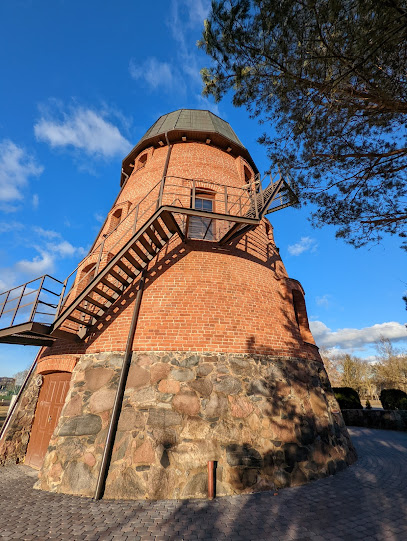
Seniausias miesto pastatas
Explore Panevėžys's oldest building, a museum rich in history and culture, showcasing the evolution of this vibrant city.
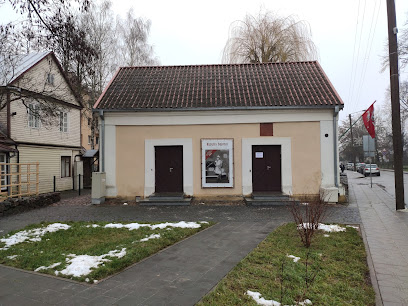
Panevezys karaite kenesa
Explore the peaceful Panevezys Karaite Kenesa, a historic place of worship that offers insight into the unique Karaite culture and traditions in Lithuania.
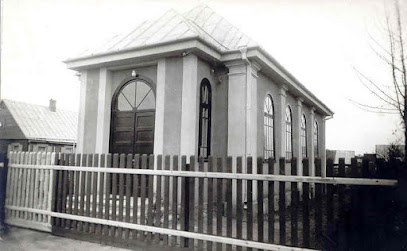
St. Peter and Paul Parish Cemetery
Explore the tranquil beauty of St. Peter and Paul Parish Cemetery in Panevėžys, where history and serenity intertwine for a reflective visit.
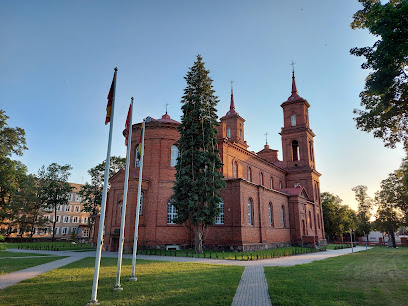
Unmissable attractions to see
Culture and Leisure Park
Discover the charm of Culture and Leisure Park in Panevėžys, a perfect blend of nature, recreation, and community activities.
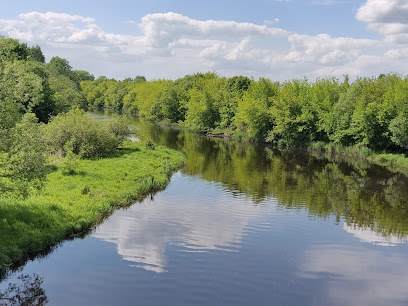
Senvagė
Explore the serene beauty of Senvagė Park in Panevėžys, a perfect retreat for nature lovers, families, and dog walkers alike.
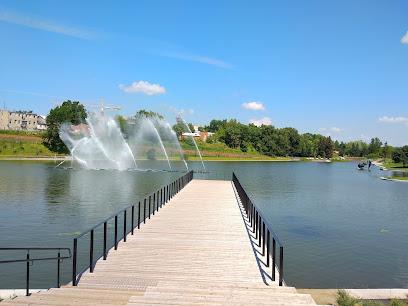
Senvagė
Explore the tranquil beauty of Senvagė, an urban park in Panevėžys that offers serene landscapes, vibrant wildlife, and a perfect escape for nature lovers.
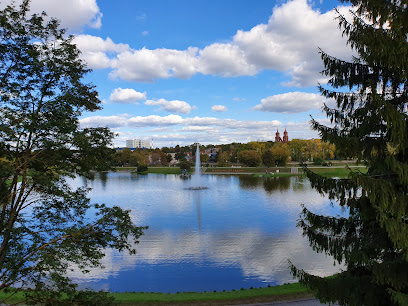
Skaistakalnis Park
Explore the beauty of Skaistakalnis Park, a serene oasis in Panevėžys, perfect for nature lovers and families seeking relaxation and adventure.
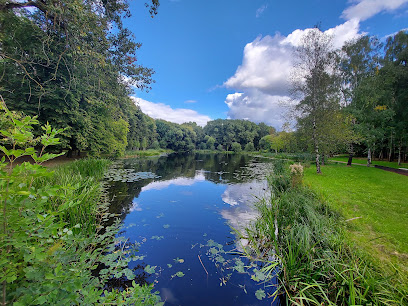
Church of St. Peter and St. Paul, Panevėžys
Explore the stunning Church of St. Peter and St. Paul in Panevėžys, a remarkable blend of neo-Romanesque and Gothic architecture in the heart of Lithuania.
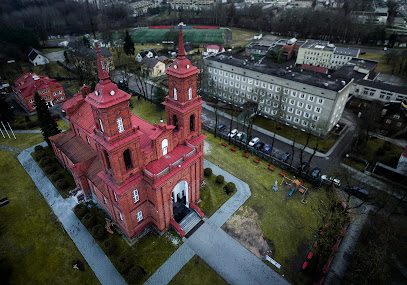
Panevėžys Cathedral
Explore the architectural splendor of Panevėžys Cathedral, a historical landmark and spiritual center in Lithuania that captivates every visitor.
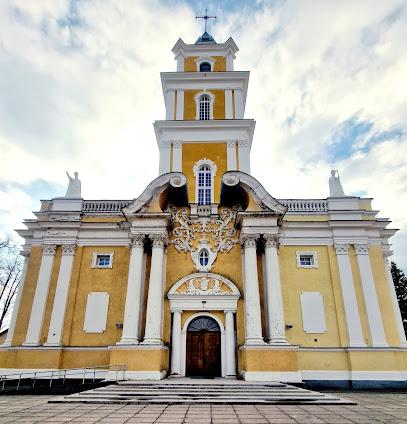
Panevėžys Cathedral
Discover the stunning neo-Gothic Panevėžys Cathedral, a captivating blend of art, faith, and history in the heart of Lithuania.
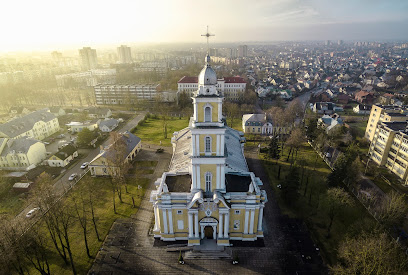
Marijonų sodas
Experience the tranquility and beauty of Marijonų Sodas, a lush park in Panevėžys, perfect for nature lovers and leisure seekers.
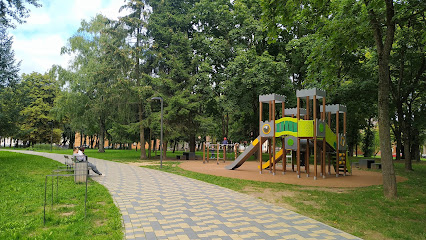
Aukštaitija narrow gauge railway
Discover the enchanting Aukštaitija Narrow Gauge Railway, where history and stunning landscapes come together for an unforgettable journey through Lithuania.
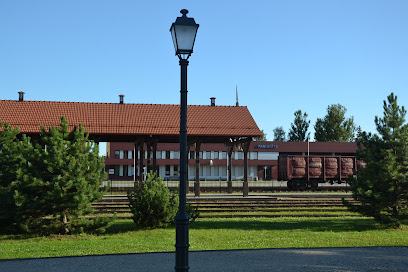
Panevėžio kraštotyros muziejus
Explore the vibrant culture and history of Panevėžys at the local history museum, Panevėžio kraštotyros muziejus.
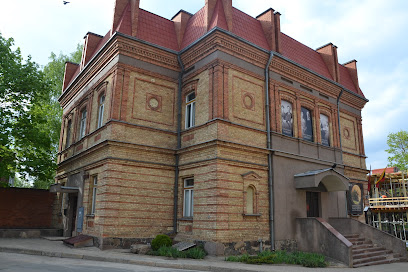
Key tree
Experience the majestic Key Tree in Panevėžys, a natural landmark steeped in folklore and surrounded by beautiful greenery, perfect for relaxation and exploration.
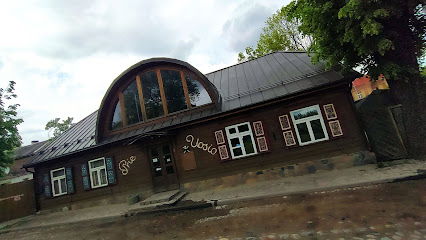
Atminimo skveras
Discover the tranquility of Atminimo Skveras, a beautiful park in Panevėžys, perfect for relaxation, reflection, and enjoying nature's beauty.
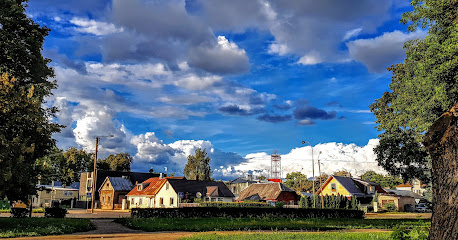
Laisvės aikštės fontanas
Explore the stunning Laisvės aikštės fontanas in Panevėžys, a perfect blend of art and nature that captivates every visitor with its beauty.
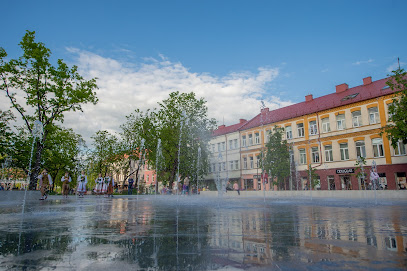
Flax museum - Mill | Linų muziejus
Explore the Flax Museum - Mill in Panevėžys District, a captivating journey through Lithuania's textile heritage and the art of linen production.
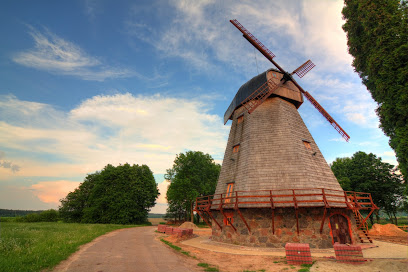
Laisvės aikštė
Discover the charm of Laisvės aikštė, a vibrant square in Panevėžys, where culture and community come together in a picturesque setting.
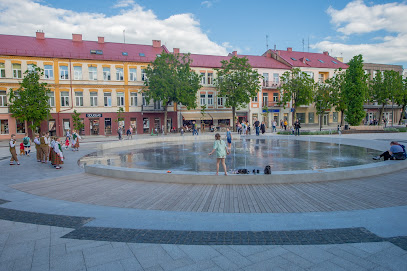
Essential places to dine
Gandralizdis
Experience exceptional local flavors at Gandralizdis in Dembava - where culinary tradition meets modern dining.
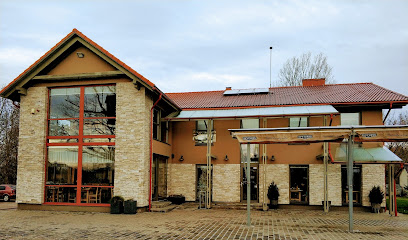
ETNO DVARAS
Discover the rich flavors of Lithuania at ETNO DVARAS in Panevėžys - a must-visit for food lovers seeking authentic cuisine.
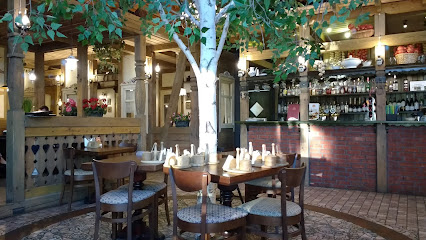
Grill London
Experience mouthwatering grilled delicacies at Grill London in Panevėžys - where flavors meet hospitality in a cozy atmosphere.
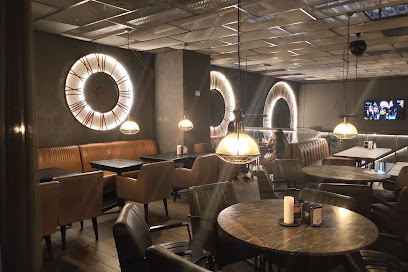
ČIČINSKAS, alaus restoranas
Experience authentic Lithuanian flavors at ČIČINSKAS Alaus Restoranas in Panevėžys – where craft beer meets traditional cuisine.
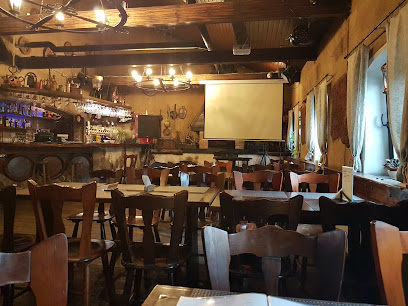
Hesburger
Experience delicious fast food at Hesburger in Panevėžys – where taste meets affordability in a vibrant shopping setting.
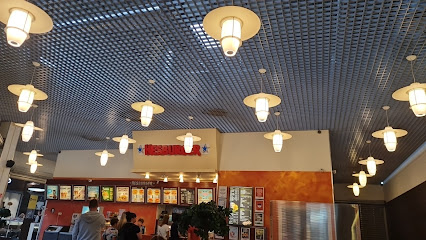
Etno Dvaras
Discover the rich flavors of Lithuania at Etno Dvaras, where tradition meets taste in every delicious dish.
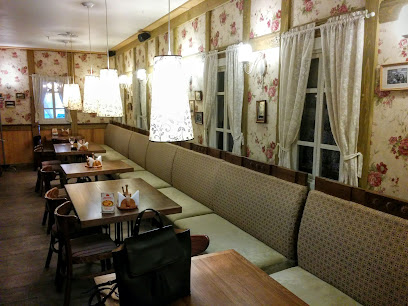
Restoranėlis „Bisas“
Experience the best of Lithuanian cuisine at Restoranėlis „Bisas“, where tradition meets modern taste in the heart of Panevėžys.
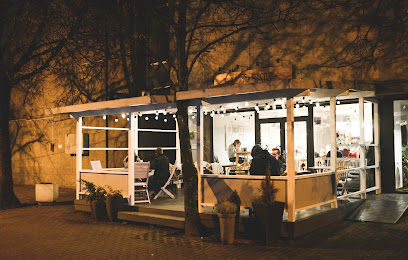
Galerija XX
Experience authentic Lithuanian cuisine at Galerija XX, where fresh ingredients meet a warm atmosphere in Panevėžys.
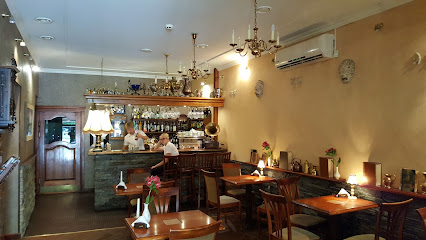
Pizza di Napoli
Savor authentic Italian pizzas at Pizza di Napoli in Panevėžys—where tradition meets flavor in every slice.
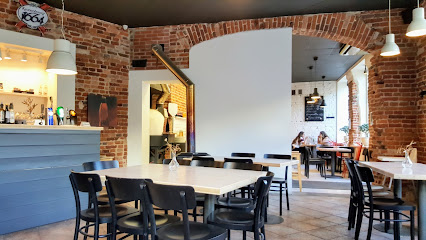
Špunka Old Barrel Pub
Discover the vibrant atmosphere and delicious traditional cuisine at Špunka Old Barrel Pub in Panevėžys – where locals gather for great food and good times.
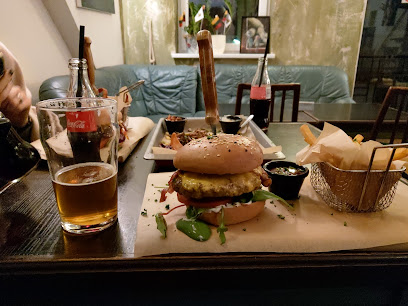
Kinų virtuvės restoranas Baiji
Discover the rich flavors of authentic Chinese cuisine at Kinų virtuvės restoranas Baiji in Panevėžys - A culinary delight awaits!
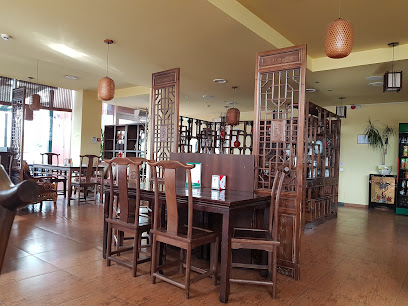
Charlie Pizza
Discover the best pizza experience in Panevėžys at Charlie Pizza – where fresh ingredients meet delicious flavors.
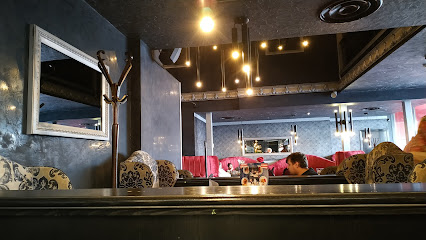
Tik Pizza
Experience delightful pizzas at Tik Pizza in Panevėžys - where family fun meets delicious flavors!
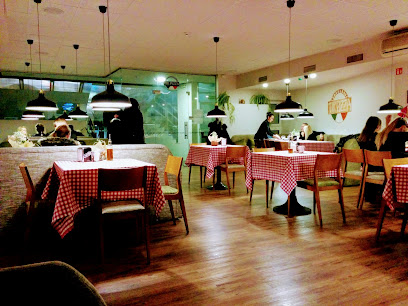
Shanghai Chinese Take-Away
Discover delightful Chinese takeout in Panevėžys at Shanghai Chinese Take-Away – where every bite takes you on a culinary journey!
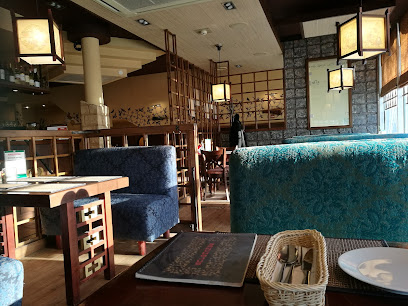
La Fa Arena Café Bar
Experience authentic Lithuanian cuisine at La Fa Arena Café Bar in Panevėžys – where flavor meets ambiance!
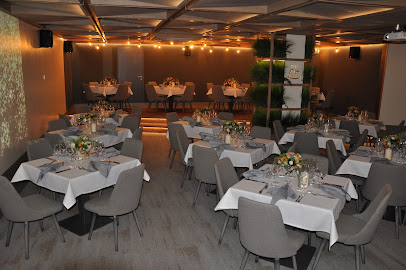
Markets, malls and hidden boutiques
RYO
Explore RYO in Panevėžys, a premier shopping mall offering diverse stores, delicious dining, and a vibrant atmosphere for all visitors.
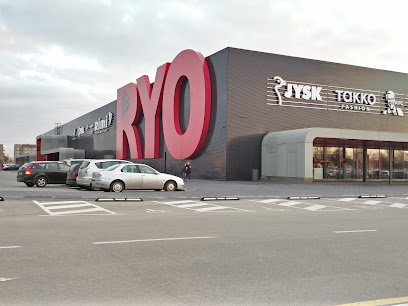
Babilonas
Discover shopping, dining, and entertainment at Babilonas in Panevėžys, a vibrant mall that offers a taste of local culture and style.
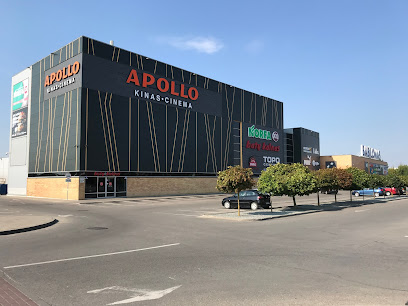
Maxima
Discover local flavors and essentials at Maxima, your go-to grocery store in Panevėžys, offering fresh produce and unique Lithuanian products.
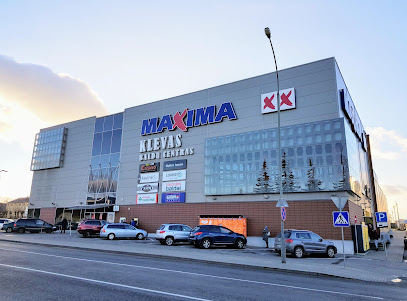
J.Masiulio knygynas
Explore J.Masiulio Knygynas in Panevėžys, a captivating bookstore offering a diverse range of literature and a warm community atmosphere.

Panevezio senamiestis
Explore the historic district of Panevezio Senamiestis, where culture, local shopping, and stunning architecture come together in a vibrant atmosphere.
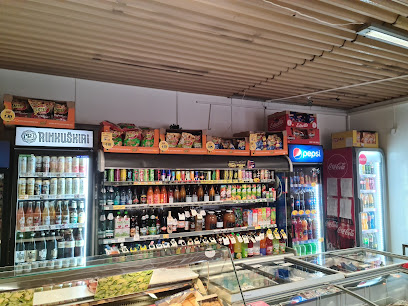
NAUDOTI BALDAI, UAB KADAMIS
Explore NAUDOTI BALDAI for unique gifts and elegant furniture that showcase the finest Lithuanian craftsmanship and design in Panevėžys.
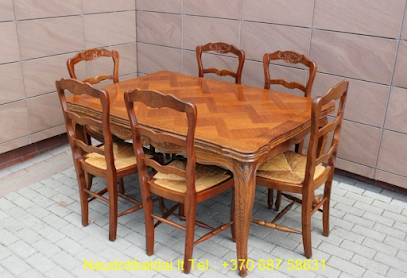
24 karatai
Explore exquisite jewelry and elegant watches at 24 Karatai, the premier jewelry store in Panevėžys.
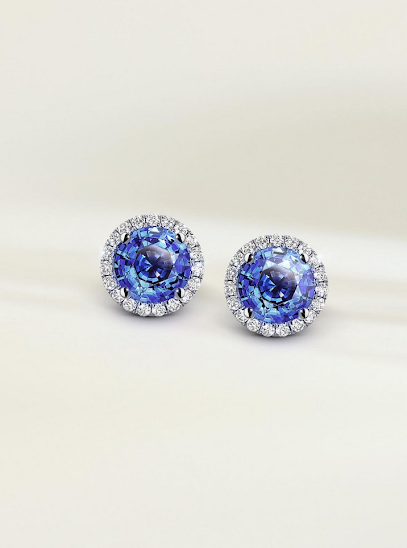
Lileila
Explore unique fashion trends and local designs at Lileila, the premier clothing store in Panevėžys, Lithuania.

Cascada
Discover a charming gift shop in Panevėžys, offering beauty products, barber supplies, and unique souvenirs. A perfect stop for tourists!
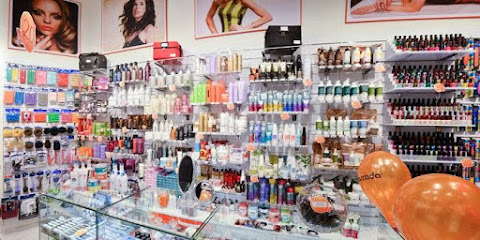
Citysouvenirs.lt
Explore Citysouvenirs.lt in Panevėžys for unique Lithuanian souvenirs and gifts that capture the essence of your travels.
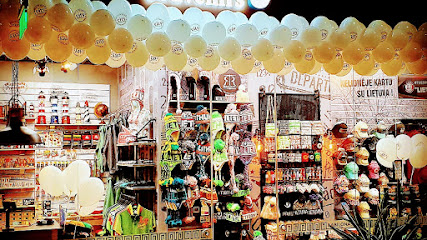
Dresson
Discover trendy apparel and unique accessories at Dresson, the premier clothing store in Panevėžys, Lithuania, perfect for all fashion enthusiasts.

UAB Dubingiai
Explore UAB Dubingiai, your ultimate destination for flooring, carpets, furniture, and interior design in Panevėžys.

Mur mur apranga
Explore unique fashion at Mur Mur Apranga, a stylish clothing store in Panevėžys offering contemporary designs and personalized shopping experiences.
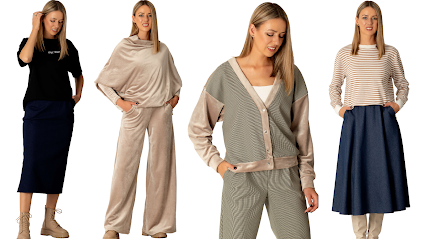
DODO butikas
Explore unique Lithuanian fashion at DODO Butikas in Panevėžys, where style meets local charm in a vibrant shopping experience.
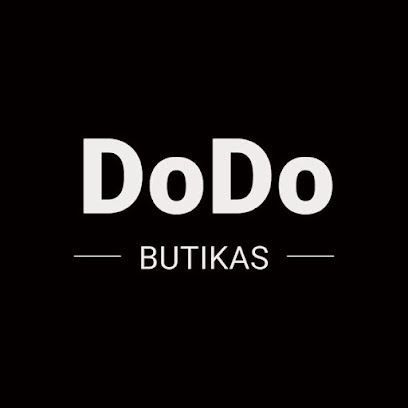
Big Hug
Explore Big Hug in Panevėžys, where handcrafted handbags and unique accessories await every fashion enthusiast.
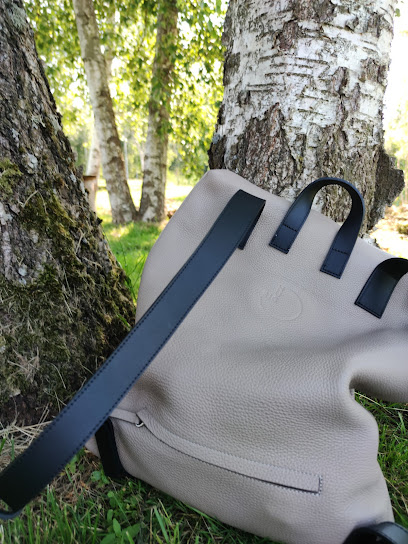
Essential bars & hidden hideouts
Grill London
Discover the best grilling experience in Panevėžys at Grill London – where flavor meets hospitality!
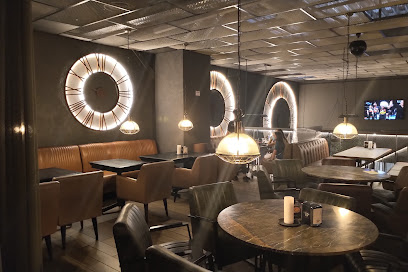
Špunka Old Barrel Pub
Discover the vibrant atmosphere and authentic flavors at Špunka Old Barrel Pub in Panevėžys, a must-visit for food lovers and culture seekers.
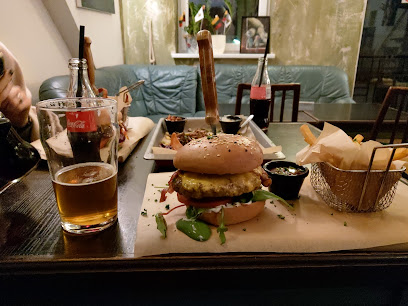
Mėsmalė Grill Pub
Discover a culinary gem in Panevėžys at Mėsmalė Grill Pub, where delicious grilled dishes and a vibrant atmosphere await every visitor.
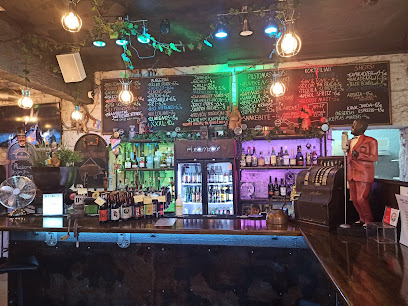
La Fa Arena Café Bar
Experience the vibrant flavors and inviting atmosphere of La Fa Arena Café Bar in Panevėžys, a culinary gem for every traveler.
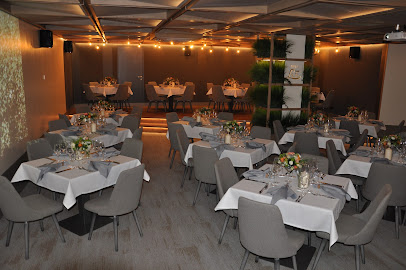
COSMOS coffee cocktail bar
Discover the unique flavors of COSMOS Coffee Cocktail Bar in Panevėžys, where exceptional coffee meets a cozy, vibrant atmosphere.
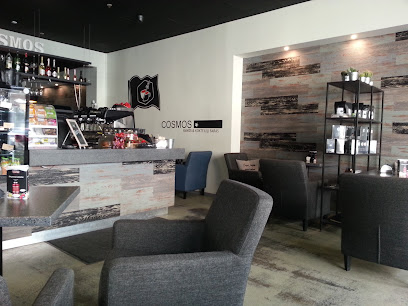
The Drunken Horse Pub
Experience the vibrant nightlife of Panevėžys at The Drunken Horse Pub, where local brews meet a lively atmosphere.
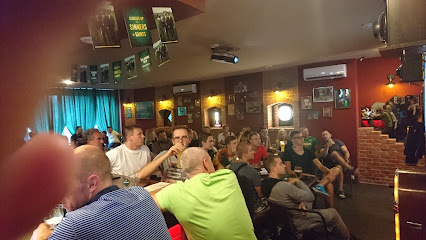
Seklyčia prie uosio
Experience authentic Lithuanian hospitality at Seklyčia prie Uosio, a charming pub in Panevėžys, offering delicious food and a welcoming atmosphere.
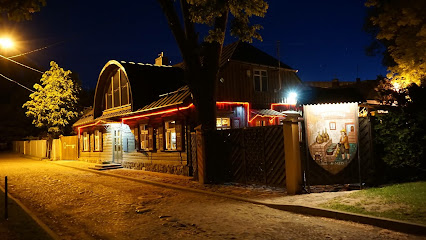
Jack House
Discover the authentic flavors of Lithuania at Jack House, a premier grill restaurant in Panevėžys, where tradition meets culinary excellence.
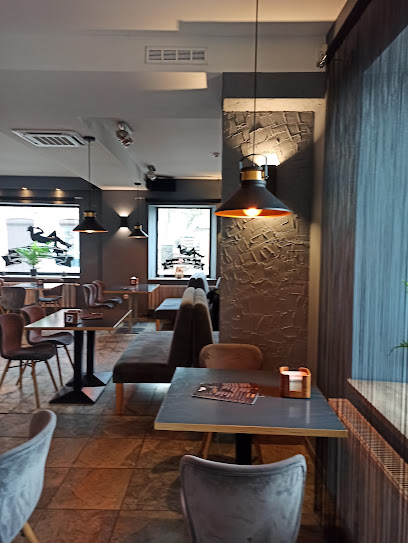
Riverside Restaurant
Discover the Riverside Restaurant in Panevėžys: a culinary haven for delightful meals, cocktails, and riverside views.
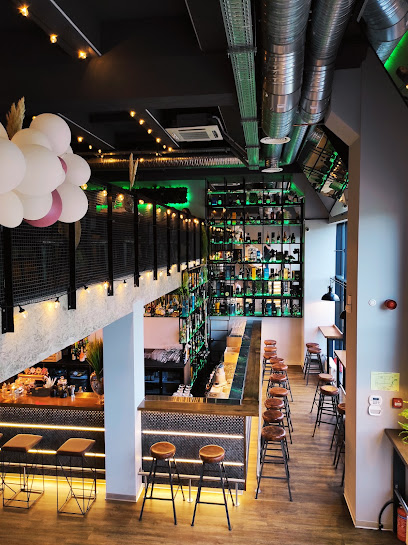
Cocktail Bar Shots
Experience the vibrant nightlife and expertly crafted cocktails at Cocktail Bar Shots, Panevėžys' premier disco club.

Lazy Monkey Bar
Discover the lively atmosphere and unique cocktails at Lazy Monkey Bar in Panevėžys, the perfect spot for nightlife enthusiasts.
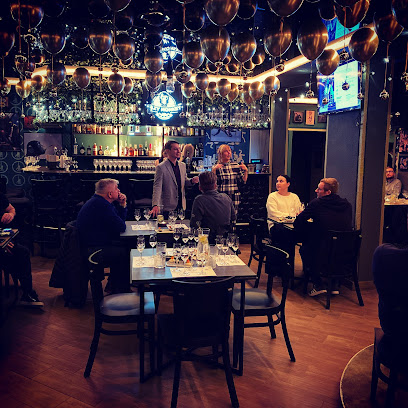
COSMOS Lounge
Discover COSMOS Lounge in Panevėžys - a vibrant coffee store and live music hotspot perfect for relaxation and entertainment.
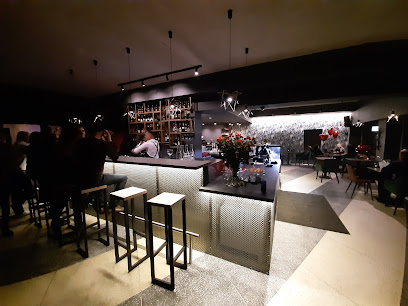
Taura
Experience the vibrant ambiance and local flavors at Taura, the must-visit bar in the heart of Panevėžys, Lithuania.
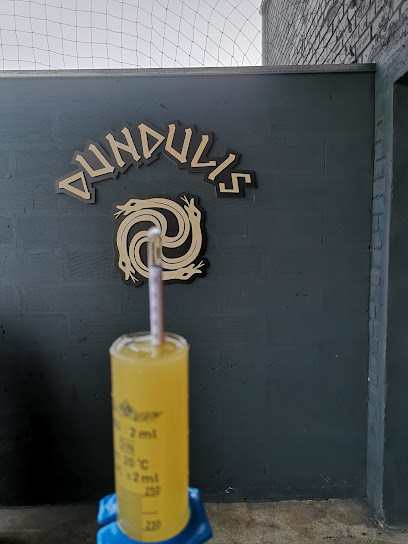
Admiral Club
Admiral Club: Your Premier Destination for Excitement and Entertainment in Panevėžys - Enjoy a Vibrant Bar and Thrilling Casino Experience.
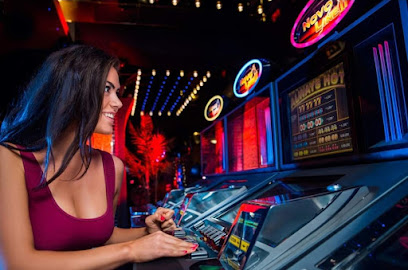
E. Misiūno IĮ
Experience the vibrant atmosphere of E. Misiūno IĮ, a cozy pub in Panevėžys, where local culture meets delightful drinks.

Local Phrases
-
- HelloLabas
[lah-bahs] - GoodbyeViso gero
[vee-soh geh-roh] - YesTaip
[tah-eep] - NoNe
[neh] - Please/You're welcomePrašau
[prah-sow] - Thank youAčiū
[ah-chyoo] - Excuse me/SorryAtsiprašau
[aht-see-prah-sow] - How are you?Kaip tu?
[kaip too] - Fine. And you?Gerai. O tu?
[geh-rai. oh too] - Do you speak English?Ar kalbate angliškai?
[ahr kahl-bah-teh ahng-leesh-kai] - I don't understandAš nesuprantu
[ahsh neh-soo-prahn-too]
- HelloLabas
-
- I'd like to see the menu, pleaseNorėčiau pamatyti meniu, prašau
[noh-reh-chow pah-mah-tee-tee meh-nyoo, prah-sow] - I don't eat meatAš nevalgau mėsos
[ahsh neh-vahl-gow meh-sohs] - Cheers!Į sveikatą!
[ee svee-kah-tah] - I would like to pay, pleaseNorėčiau sumokėti, prašau
[noh-reh-chow soo-moh-keh-tee, prah-sow]
- I'd like to see the menu, pleaseNorėčiau pamatyti meniu, prašau
-
- Help!Pagalba!
[pah-gahl-bah] - Go away!Eik šalin!
[ayk shah-leen] - Call the Police!Paskambinkite policijai!
[pah-skahm-been-kee-teh poh-lee-tsee-yai] - Call a doctor!Paskambinkite gydytojui!
[pah-skahm-been-kee-teh gi-dih-toh-yoo-ee] - I'm lostAš pasiklydau
[ahsh pah-see-kloo-dow] - I'm illAš sergu
[ahsh sehr-goo]
- Help!Pagalba!
-
- I'd like to buy...Norėčiau pirkti...
[noh-reh-chow peerk-tee] - I'm just lookingAš tik žiūriu
[ahsh teek zhee-oo-ryoo] - How much is it?Kiek tai kainuoja?
[kyehk tahy kahy-noo-yah] - That's too expensiveTai per brangu
[tai pehr brahn-goo] - Can you lower the price?Ar galite sumažinti kainą?
[ahr gah-lee-teh soo-mah-zihn-tee ky-nah]
- I'd like to buy...Norėčiau pirkti...
-
- What time is it?Kiek valandų?
[kyehk vah-lahn-doo] - It's one o'clockViena valanda
[vyeh-nah vah-lahn-dah] - Half past (10)Dešimt penkiolika
[deh-shimt pehn-koh-lee-ka] - MorningRytas
[ree-tahs] - AfternoonPopietė
[poh-pyeh-teh] - EveningVakaras
[vah-kah-rahs] - YesterdayVakar
[vah-kahr] - TodayŠiandien
[shyah-ndyen] - TomorrowRytoj
[ree-toy] - 1Vienas
[vyeh-nahs] - 2Du
[doo] - 3Trys
[treess] - 4Keturi
[keh-too-ree] - 5Penki
[pehn-kee] - 6Šeši
[shyeh-shee] - 7Septyni
[sehp-tuh-nee] - 8Aštuoni
[ahs-too-oh-nee] - 9Devyni
[deh-veen-ee] - 10Dešimt
[deh-shimt]
- What time is it?Kiek valandų?
-
- Where's a/the...?Kur yra...
[koor yrah] - What's the address?Koks adresas?
[kohks ah-dreh-sahs] - Can you show me (on the map)?Ar galite man parodyti (žemėlapyje)?
[ahr gah-lee-teh mahn pah-roh-dih-tee zheh-meh-lah-pyeh] - When's the next (bus)?Kada kitas (autobusas)?
[kah-dah kee-tahs ow-toh-boo-sahs] - A ticket (to ....)Bilietas (į ....)
[bee-lyeh-tahs ee]
- Where's a/the...?Kur yra...
History of Panevėžys
-
Panevėžys was officially founded in 1503 by the Grand Duke of Lithuania, Alexander Jagiellon. The town's establishment was part of a broader strategy to strengthen the defenses of the Grand Duchy of Lithuania against the Livonian Order. The town quickly became an important center of trade and commerce in the region, benefiting from its strategic location along the Nevėžis River.
-
During the era of the Polish-Lithuanian Commonwealth (1569–1795), Panevėžys thrived as a significant economic and cultural hub. The town was granted Magdeburg rights in 1780, which provided it with a degree of self-governance and contributed to its growth. This period saw the construction of numerous churches, schools, and public buildings, reflecting the town's prosperity.
-
The partitions of Poland in the late 18th century had profound effects on Panevėžys. After the third partition in 1795, Panevėžys became part of the Russian Empire. The town experienced a period of stagnation under Russian rule, but it remained an important regional center. The local population faced various challenges, including the imposition of Russian administrative and cultural policies.
-
The 19th century was a time of gradual development for Panevėžys. The town saw the establishment of various educational institutions, including the Panevėžys Gymnasium in 1835. Industrialization began to take hold, and the town became known for its textile and agricultural industries. Panevėžys also played a role in the Lithuanian national revival, with local activists promoting Lithuanian language and culture.
-
Panevėžys was significantly affected by World War I, with the town being occupied by German forces. After the war, Panevėžys became part of the newly independent Republic of Lithuania in 1918. During the interwar period, Panevėžys experienced rapid development, with improvements in infrastructure, education, and culture. The town became a vibrant center for Lithuanian arts and literature.
-
World War II brought immense suffering to Panevėžys. The town was occupied by Soviet forces in 1940, and later by Nazi Germany in 1941. The Jewish community of Panevėžys, which had been a significant part of the town's social fabric, was decimated during the Holocaust. After the war, Panevėžys was incorporated into the Soviet Union, leading to decades of Soviet occupation. The town underwent significant industrialization, but also faced political repression and cultural suppression.
-
Following Lithuania's declaration of independence in 1990, Panevėžys entered a new era of development. The town has since embraced modernization, with significant investments in infrastructure, education, and culture. Panevėžys is now known for its vibrant cultural scene, including theaters, museums, and festivals. The town continues to honor its rich history while looking towards a dynamic future.
Panevėžys Essentials
-
Panevėžys is located in the northeastern part of Lithuania. The nearest international airport is Vilnius Airport, approximately 130 kilometers away. From Vilnius, you can take a bus or a train to Panevėžys. The journey typically takes around 2 to 3 hours by road or train. Alternatively, Kaunas Airport is another option, located about 110 kilometers from Panevėžys. Car rentals and taxis are also available at both airports for a more direct route.
-
Panevėžys is well-connected by a network of buses and taxis. The local bus system is efficient and affordable, making it convenient to navigate the city. Bicycles are also a popular mode of transport, and bike rentals are widely available. For those who prefer driving, car rentals are available and the traffic is generally moderate, making it easy to get around.
-
The official currency in Lithuania is the Euro (EUR). Credit and debit cards are widely accepted in most hotels, restaurants, and shops. ATMs are plentiful throughout Panevėžys, so withdrawing cash is convenient. It's advisable to carry some cash for smaller establishments and markets that may not accept card payments.
-
Panevėžys is generally a safe city for tourists. However, as with any destination, it is wise to take standard precautions. Avoid walking alone at night in poorly lit areas and be vigilant in crowded places to avoid pickpocketing. There are no specific high-crime areas targeting tourists, but staying aware of your surroundings is always good practice.
-
In case of emergency, dial 112 for immediate assistance, which is the universal emergency number in Lithuania. Panevėžys has several medical facilities and pharmacies where you can obtain over-the-counter medications. It is advisable to have travel insurance that covers medical emergencies.
-
Fashion: Do dress modestly when visiting religious sites. Casual attire is acceptable in most places. Religion: Do respect local customs and traditions. Remove hats and stay quiet in churches. Public Transport: Do be courteous and offer your seat to elderly passengers. Don't be loud or disruptive. Greetings: Do greet people with a handshake. Lithuanians appreciate politeness and formality. Eating & Drinking: Do try local dishes and accept food and drinks offered by hosts. Don't refuse hospitality, as it is considered impolite.
-
To experience Panevėžys like a local, visit the local markets such as the Panevėžys Market Hall for fresh produce and traditional Lithuanian goods. Engage with locals, who are often friendly and willing to share stories about the city's history and culture. Don't miss the Panevėžys Civic Art Gallery and the famous Narrow Gauge Railway Museum for a unique cultural experience. For outdoor activities, visit the Senvagė Park, a popular spot for walking and relaxing.
Trending Landmark in Panevėžys
-
Culture and Leisure Park
-
Senvagė
-
Skaistakalnis Park
-
Culture Palace community center of Panevezys
-
Lithuanian Martyrs Church, Berčiūnų
-
Panevezys Civic Art Gallery
-
Panevėžio kraštotyros muziejus
-
secret Bunker
-
VšĮ Panevėžio plėtros agentūra (Panevėžys NOW)
-
Skaistakalnis
-
Panevezio vyskupijos kurija
-
Panevėžys Windmill
-
Seniausias miesto pastatas
-
Panevezys karaite kenesa
-
St. Peter and Paul Parish Cemetery
Nearby Cities to Panevėžys
-
Things To Do in Šiauliai
-
Things To Do in Jonava
-
Things To Do in Utena
-
Things To Do in Kaunas
-
Things To Do in Vilnius
-
Things To Do in Daugavpils
-
Things To Do in Riga
-
Things To Do in Jurmala
-
Things To Do in Marijampolė
-
Things To Do in Sigulda
-
Things To Do in Cesis
-
Things To Do in Talsi
-
Things To Do in Klaipėda
-
Things To Do in Kuldiga
-
Things To Do in Suwalki








